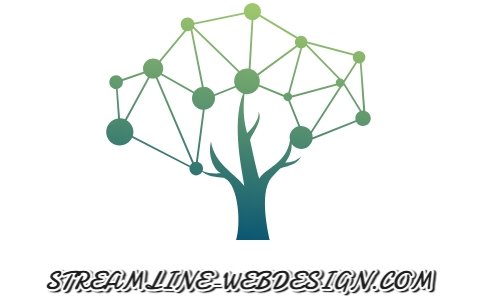
As more companies recognize the importance of accessibility, the path to achieving it becomes clearer. However, the journey is not the same for every organization. Whether you’re a small startup or a large enterprise, each company has its own unique structure, resources, and culture. These factors influence how accessibility is approached and implemented. What remains consistent across the board, though, is the need for a thoughtful and strategic plan to make meaningful progress.
At the heart of any successful accessibility strategy is the understanding that this is a marathon, not a sprint. Companies can’t simply add a few accessibility features and call it a day. Accessibility requires continuous effort, evolving systems, and careful resource allocation. The good news is that it’s possible to get there—and in most cases, the earlier you start, the better.
The Accessibility Resource Dilemma
One of the most common challenges accessibility teams face is the constant shortage of resources. Whether it’s time, money, or staff, there never seems to be enough to meet all the needs that arise. Accessibility may be a priority for leadership on paper, but it often takes a backseat when competing against other pressing business objectives.
This scarcity of resources can create frustration. No accessibility team, regardless of the size of the company, feels they have enough resources to fully address every issue. In fact, it’s a rare occurrence when any team in an organization feels “fully resourced.” The trick, then, is not to wait for a perfect scenario with infinite time and budget. Instead, the key is strategic resource allocation—making sure that every dollar, hour, and team member is used effectively.
For instance, rather than constantly reacting to accessibility issues as they arise—pushing fixes through the door at the last minute—a more proactive approach ensures that resources are focused where they will have the most long-term impact. This means embedding accessibility into the development process early on, rather than waiting until the end when changes can be costly and time-consuming.
Shifting Left: Proactive vs. Reactive Accessibility
One of the most effective strategies for achieving accessibility is shifting the process “left.” In project management, “shifting left” refers to addressing potential issues as early as possible in the development cycle—rather than waiting until the end when fixes may be more difficult to implement.
When it comes to accessibility, this shift is critical. Ideally, accessibility should not be an afterthought. If companies wait until the product is near completion or post-launch to focus on accessibility, they’re likely to face increased costs and time delays. On top of that, accessibility issues might get overlooked or treated as secondary priorities. Fixing these problems late in the process can lead to frustration among the team, and worse, it can cause the product to fall short of meeting the needs of diverse users.
By shifting left, accessibility considerations are built into the product from the very beginning. This means that accessibility is part of the design and development process, not an additional task that’s bolted on later. Designers and developers can collaborate early on to ensure that accessibility features are seamlessly integrated, leading to smoother, more efficient workflows.
A shift-left strategy also benefits the overall user experience. Accessibility features that are implemented early are more likely to be well thought out and user-friendly, rather than rushed or tacked on at the last minute. And this approach doesn’t just benefit users with disabilities—it enhances the experience for all users. A website or app that’s built with accessibility in mind from the start is likely to be more intuitive, easier to navigate, and more enjoyable for everyone.
Balancing Resources and Impact
The reality is that no company—no matter how large or well-funded—can address every single accessibility issue all at once. With limited resources, prioritization becomes essential. Teams must make strategic decisions about where to focus their efforts.
One effective way to prioritize is by considering the impact of each change. For example, a simple, well-placed change such as improving color contrast on high-traffic pages can make a significant difference in accessibility with minimal effort. On the other hand, more complex tasks like redesigning an entire platform to meet WCAG 2.1 guidelines might require more resources and time, but the benefits are long-term.
Another critical consideration is understanding the needs of your audience. Different disabilities require different kinds of adjustments. For instance, users with visual impairments may benefit from screen reader-friendly navigation, while those with motor impairments might need an alternative to mouse clicks. Prioritizing the most critical needs for your primary user base will make the best use of available resources.
A careful balance between short-term fixes and long-term investments is key. Teams should aim for quick wins to improve accessibility immediately, while also planning for larger, systemic changes that will embed accessibility into the fabric of the organization over time.
The Role of Organizational Culture in Accessibility
Beyond resources and process changes, organizational culture plays a pivotal role in achieving sustainable accessibility. Accessibility should be seen as a collective responsibility—one that involves every department, from development to marketing to customer service. When accessibility is integrated into the company culture, it becomes an ongoing commitment, not just a project or a goal.
This cultural shift requires buy-in from leadership as well as cross-functional teams. Accessibility needs to be prioritized at the highest levels of the organization, and everyone should understand its value and implications. Teams should be trained and empowered to identify and address accessibility issues proactively, rather than treating them as a secondary task.
This cultural approach not only helps improve accessibility but also builds a more inclusive company overall. An organization that values diversity and accessibility is likely to see increased employee morale, better collaboration, and stronger connections with customers.
Conclusion: The Road to Accessibility
The road to a fully accessible product or website isn’t always easy, but with a thoughtful, proactive strategy, it’s absolutely achievable. By allocating resources wisely, shifting accessibility considerations to the beginning of the development process, and fostering a culture of inclusivity, companies can ensure that they’re not just checking boxes for compliance—they’re creating products that are truly accessible for everyone.
While the path will look different for every company, one thing remains clear: accessibility isn’t a one-off goal. It’s an ongoing journey that requires commitment, collaboration, and the willingness to evolve and improve over time. By taking a holistic, strategic approach, companies can build accessibility into their DNA—and ultimately create better, more inclusive experiences for all.











